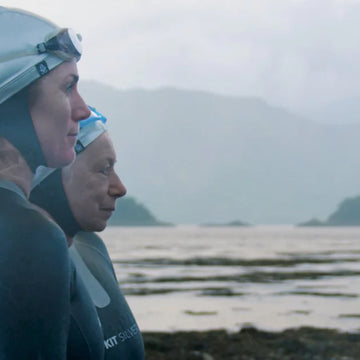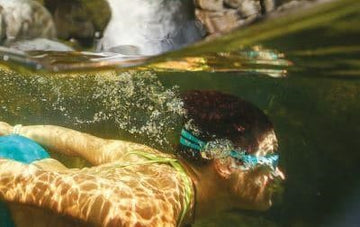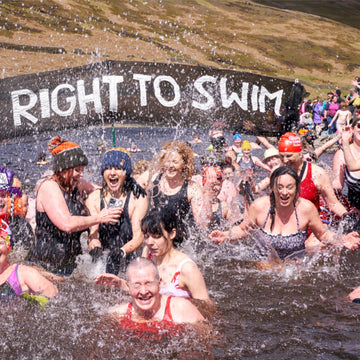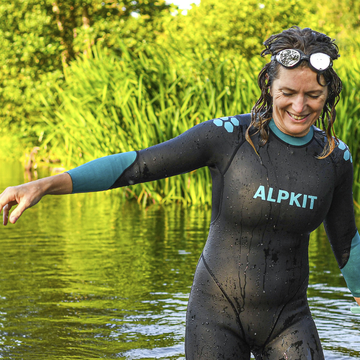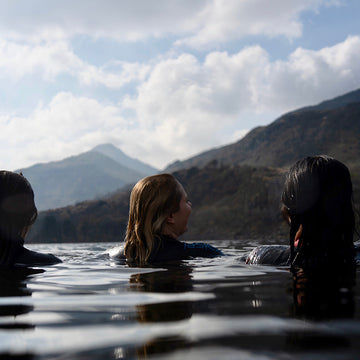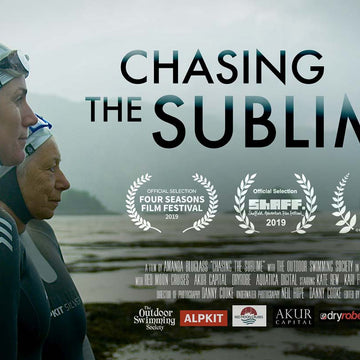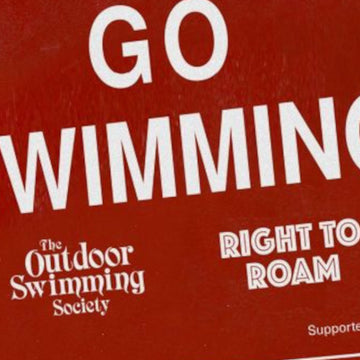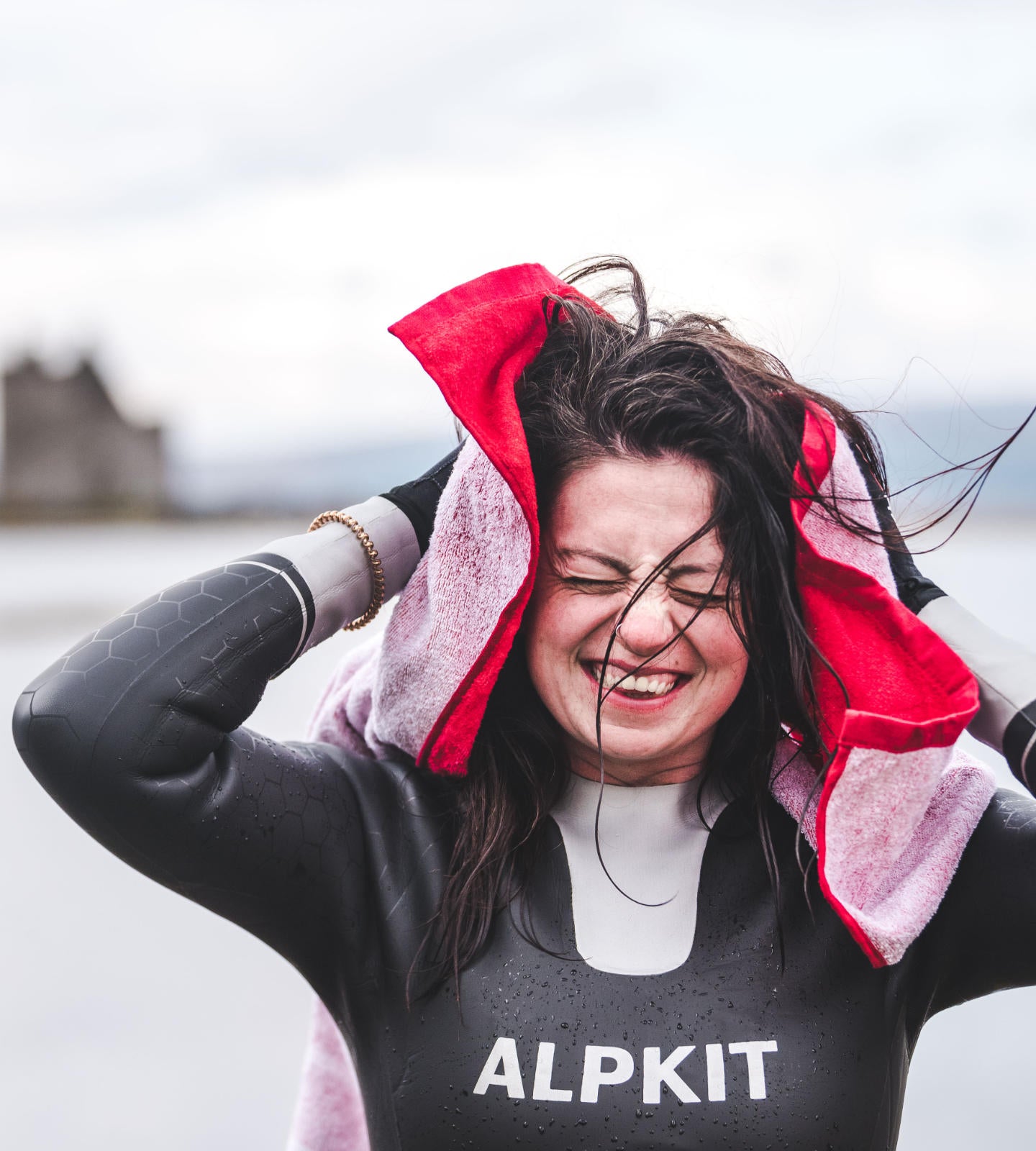
Mountain lakes and tarns are a wild swimmer's playground. Plunge into the thrilling waters, embrace the chill, and feel nature weave its magic all around you.
Are you ready to add a splash of adventure to your outdoor activities? If you’re captivated by the charm of the mountains and love swimming, wild swimming in mountain tarns and lakes might just be your next favourite activity. Here’s why you should give it a go and how you can enjoy it safely and responsibly.
Why swim in the mountains?
Wild swimming allows you to connect with nature in a profound and personal way. Imagine floating in clear, crisp waters, surrounded by panoramic views of rugged landscapes. Every swim is a unique encounter with the wilderness. It’s not only exhilarating but also immensely beneficial for your mental and physical health, offering a refreshing escape from the heated rush of everyday life or to give your feet respite from hours of pounding the trail.

What you’ll need for your mountain swim
You don’t need much to dip your toe in the water. Depending on how susceptible you are to the cold, not much at all, but a few essentials will ensure your swims are enjoyable and safe:
- Swimming Costume or Wetsuit: A wetsuit is beneficial in colder waters as it provides warmth and buoyancy. In warmer conditions, a standard swimming costume might suffice.
- Tow Float, swim cap and whistle: Highly visible tow floats are great for safety. Alongside a swim cap they make you more visible to others and can even hold small personal items. A safety whistle is essential for attracting attention if you are in difficulty.
- Waterproof Bag: Keep your essentials dry while you explore the waters.
- Water Shoes: Protect your feet from rocky bottoms or slippery edges.
- Thermal Layers and Towel: For warmth before and after your swim, pack some extra thermal layers, a quick-drying towel, hat and gloves.
- Dryrobe: A large pile coat you can just throw over everything on your way to, or out of the water.
Finding a mountain lake to swim in

To find ideal locations for wild swimming, websites like Wild Swim Map offer a treasure trove of user-contributed spots and advice. Additionally, books and local outdoor groups can be invaluable resources. Areas like the Lake District, Scottish Lochs, and Eryri have popular, scenic spots perfect for beginners and seasoned swimmers alike.
Can you swim where you want?
So you have found a mountain lake that has taken your fancy. The views are stunning, the weather is still and the water is clean, but are you actually allowed to get in the water?
If you were swimming in the sea or tidal waters the answer would be a clear yes, but our inland waters are a different story.
The Outdoor Swimming Society is leading important work in gaining better access rights to inland waters for wild swimmers through their Right to Swim manifesto. It is an essential campaign that we thoroughly support.
In Scotland the rights to access waterways are based on the principle of responsible use, and this is what we want to see in England and Wales, too. The OSS encourages responsible swimming, which involves respecting the environment, being considerate of other users and communities near where we swim or visit, and taking personal responsibility for safety, as outlined in the OSS Outdoor Swimmers Code.
We also have an additional blog on Where you can go wild swimming.
Think before you swim
While wild swimming is invigorating it’s crucial to do your prep so that you can enjoy it safely.
- Never swim alone: Always swim with a buddy for safety. You might even have friends with a paddle-board or canoe who can accompany you.
- Check the weather and water conditions: Before you dive in, make sure conditions are safe. Avoid swimming after heavy rainfalls which can lead to faster currents and colder temperatures.
- Acclimatise to the temperature: Cold water can be a shock to the system. Acclimatise by slowly wading into the water.
- Know your limits: Be aware of your swimming ability and don’t stray too far from a place you can easily exit the water.
- Respect the environment: Be mindful of the natural surroundings and wildlife. Avoid leaving any trace of your visit.
A joint campaign between the RNLI and Swim England called Respect the Water was set up to reduce the number of water related incidents by promoting safety advice. Their website offers clear advice along with steps you should take if you get into trouble.
Swimming in the mountain environment
When heading out to a remote loch hope for the best and plan for the worst! We all know our weather is changeable, and this is amplified in our mountains.
Wear what you would as if you were hillwalking - shoes or boots appropriate for the trail, don’t trek up in your water shoes thinking you are going to be saving some weight.
Pack your standard hillwalking safety equipment; map, compass, first aid kit, headtorch, survival bag and make sure you know how to use them. Let someone know where you are going, send them pictures to show what a great time you are having!
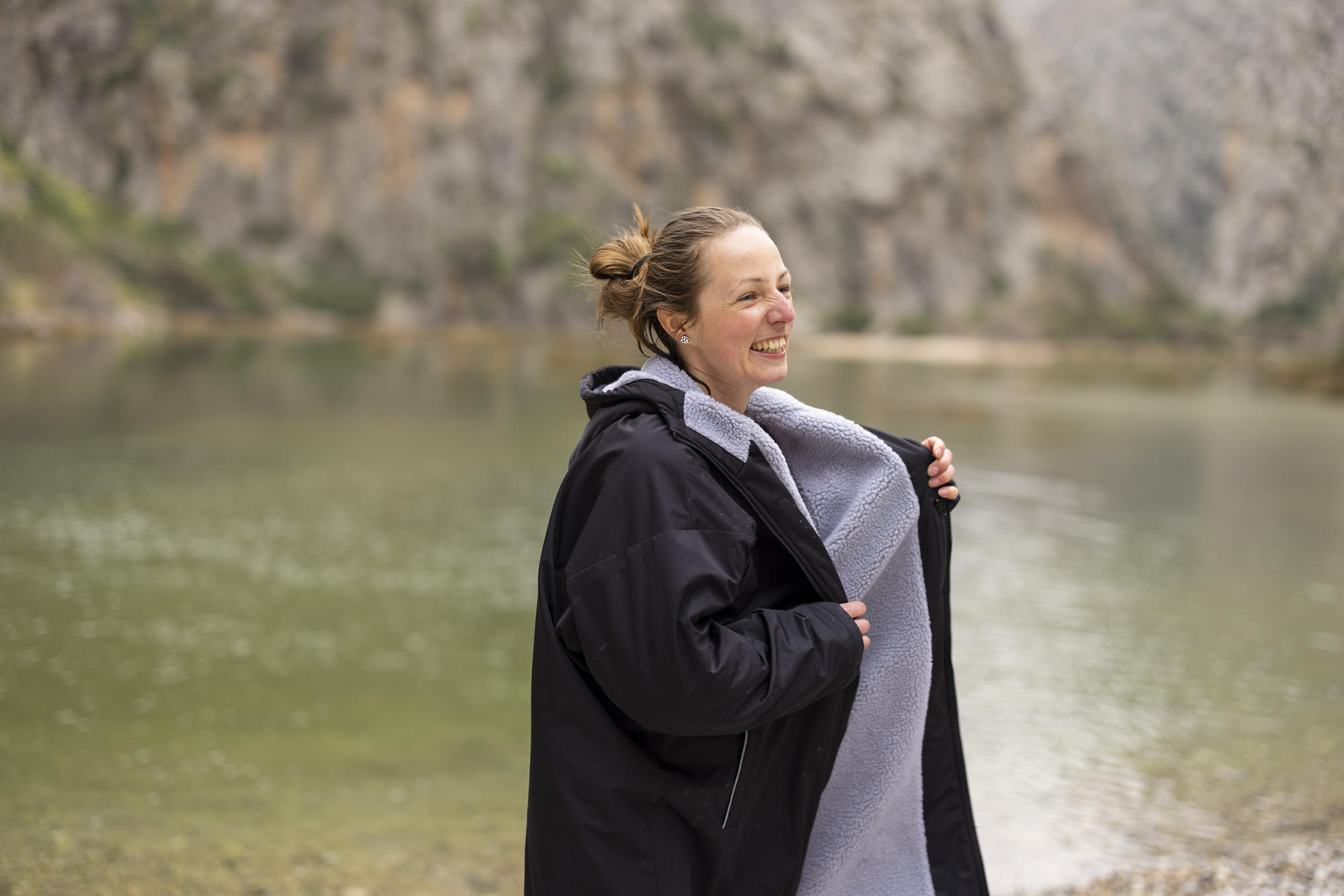
Be aware of the risk of hypothermia after you exit the water, the combination of a chill mountain breeze on your wet skin will cool you rapidly. Get your layers on and find shelter from the wind. A flask of hot tea or soup and a bag of snacks will warm you up and give your energy levels a boost for the hike home.
Stay safe whatever your adventure, Mountain Rescue England and Wales have safety advice here.
Another superb resource with advice on specific mountain areas is AdventureSmartUK.
Water Quality
Sadly we cannot take clean water as a given in our country. Most severely affected are our rivers as a result of sewage discharge and phosphorus based fertilisers. If swimming in rivers is your bag the Rivers Trust Sewage Map is an essential tool in your search for safe waters. The Environmental Agency also have a swimming map, but this is more focussed on coastal areas.
Lowland lakes are also susceptible to the same pollutants. One of the most visible signs of pollution is the blue-green algae we see floating on the waters surface. The Love Windermere partnerships website provides an overview of the challenges of managing water quality in one of our busiest mountain lakes.
Fortunately our highland mountain lakes are not affected in quite the same way, but there are still things to look out for. Polluting nutrients, such a nitrogen can be transported from our agricultural and industrial areas and deposited in mountain lakes via rain, wind and snow, but without a scientific testing kit and a degree in environmental science what are you going to do!
Pay attention for signs of pastoral farming, suspicious pipes entering the water, avoid stagnant water and be conscious of any mountain huts upstream of your lake. Avoid swimming after heavy rainfall which may carry bad stuff into the water. Look out for cloudy water and algal bloom on the surface, don't swim with open cuts, don't pee or poop in the water, don't swallow water and do sanitise your hands after you get out.
Water safety and acclimatising to the water
It’s time to enter the water. The water temperature feels comfortable to the touch, but a final word of caution. Be careful when entering the water the first time, especially in a heat wave.
The majority of cold water drownings are caused by cold water shock rather than the more widely known risk of hypothermia. Sadly in recent years, as our summers have been becoming warmer and more people have been seeking enjoyment in our water ways the number of incidents has been rising.
A large body of water can look deliciously tempting after you have sweated up a hill. The surface, heated by the strong sun may be substantially warmer than the water just a few metres down.
This layer between the warmer and cooler water is called the thermocline. In this region water temperature can drop significantly. If you dive in you may penetrate the thermocline and enter the much cooler water, potentially shocking your body. No matter how strong a swimmer you are, this cold water shock can leave you incapacitated.
Walkers learn the importance of acclimatising to altitude in the high mountains, wild swimmers learn how to acclimatise to colder water temperature.
Obviously a wetsuit can help insulate you against the cold water shock, but even the effect of cold water on your exposed face will have an impact, as kayakers will know well from rolling in cold water.
Enjoy your swim
If you are a strong, confident swimmer spare a thought for your swim buddy who might not be quite so keen to head straight out into the middle of the lake. Wild swimming can take some adjustment, especially if you have only swum in an indoor pool.
- Waves or surface ripples will make navigation and breathing more difficult.
- The absence of pool boundaries, lanes, roof or floor may lead to a feeling of disorientation.
- No matter how clean the water it is unlikely you will see the lake floor. This sensation of unknown abyss can freak out even strong swimmers.
- You may be sharing your water with other creatures.
- Water temperature may vary as you swim through pockets of cool and warm water.
Wild swimming is a chance to experience another side of the mountains. Swim beneath open skies, and create moments of quiet solitude or joyous camaraderie with fellow swimmers. Refresh your routine, invigorate your body, it’s an adventure that beckons!
Extending your swim
Once you feel comfortable swimming in mountain lakes you might ask yourself what's next. The logical answer is to find more lakes in beautiful places and enjoy swimming for what it is. However, for some waterbabies this isn't enough, and many harebrained, niche challenges have spawned which combine other mountain activities with swimming in mountain lakes. You may be one of these people, for Ben Dowman it was the challenge of combining endurance cycling with swimming Lakeland tarns in the Frog Whitton challenge. For Dan Duxbury it was combining running the Lakeland 3000ers with swimming in the Frog Graham Swim-Run Challenge. If neither of these take your fancy invent your own, we would love to hear about it.
What to do in an emergency
If you see someone struggling swimming in a mountain lake or loch the advice is to call 999 and ask for the Fire Service.
More information
This introductory guide has covered the basics. If you want to immerse yourself deeper into these waters we recommend starting with our friends at the Outdoors Swimming Society. Their website is a comprehensive repository for gear, tips, advice where to swim, safety, stories and community.
If you are an experienced swimmer discovering our mountain environments for the first time the links to mountain safety in this blog offer essential reading. Educate yourself, share this with your party, tap in to the large network of enthusiasts, mountain and swim leaders, add your voice to the campaign for the right to swim and above all swim safely.

![Straven [Womens]](http://alpkit.com/cdn/shop/files/womens-straven-2025-1.jpg?v=1744723504&width=768)
![Straven [Womens]](http://alpkit.com/cdn/shop/files/womens-straven-2025-3.jpg?v=1744723500&width=768)
![Tarka Wetsuit [Mens]](http://alpkit.com/cdn/shop/files/mens-tarka-2025-1.jpg?v=1744723498&width=768)
![Tarka Wetsuit [Mens]](http://alpkit.com/cdn/shop/files/mens-tarka-2025-4.jpg?v=1744730706&width=768)
![Tarka Wetsuit [Womens]](http://alpkit.com/cdn/shop/files/womens-tarka-2025-1.jpg?v=1744723496&width=768)
![Tarka Wetsuit [Womens]](http://alpkit.com/cdn/shop/files/womens-tarka-2025-3.jpg?v=1744730715&width=768)
![Terrapin Natural Swimming Wetsuit [Mens]](http://alpkit.com/cdn/shop/products/mens-terrapin-e.jpg?v=1695745450&width=768)
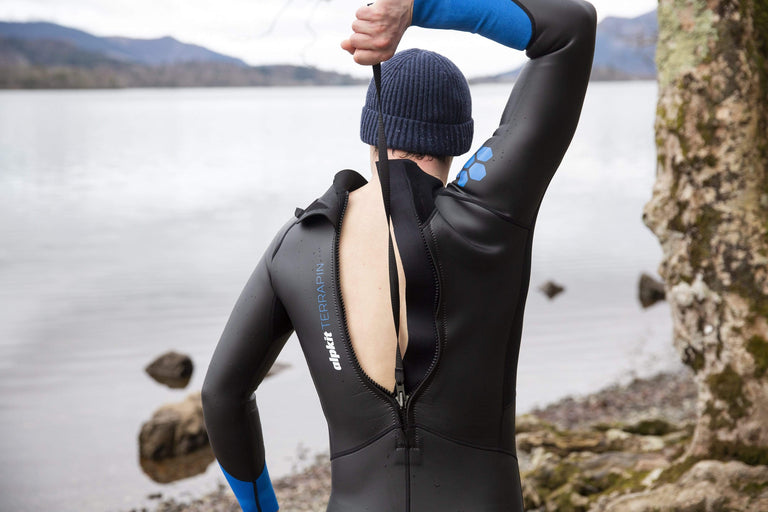
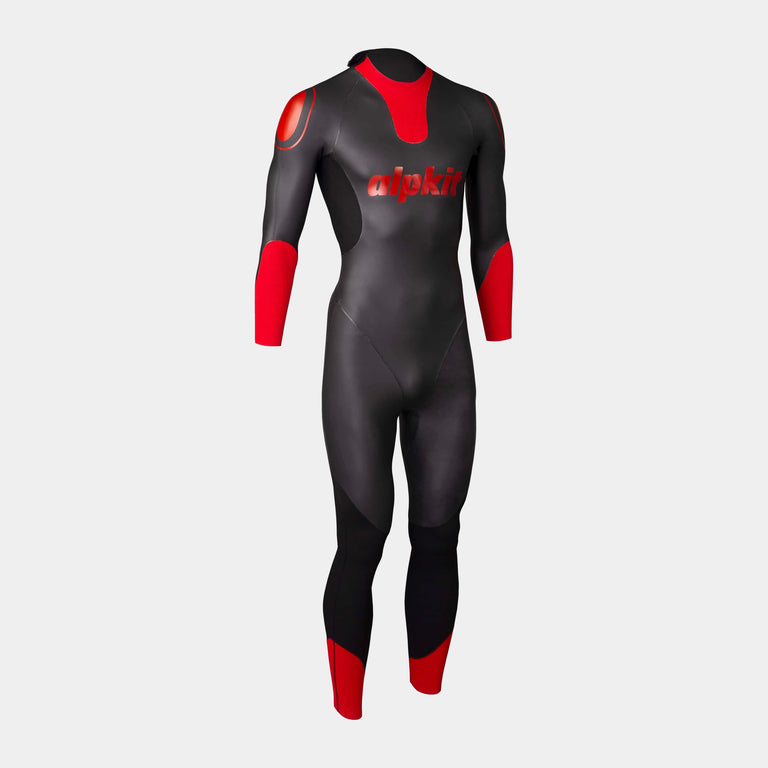
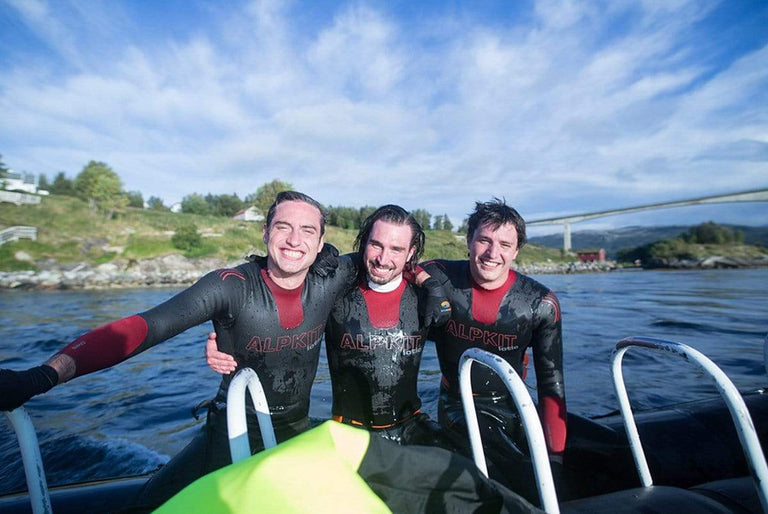
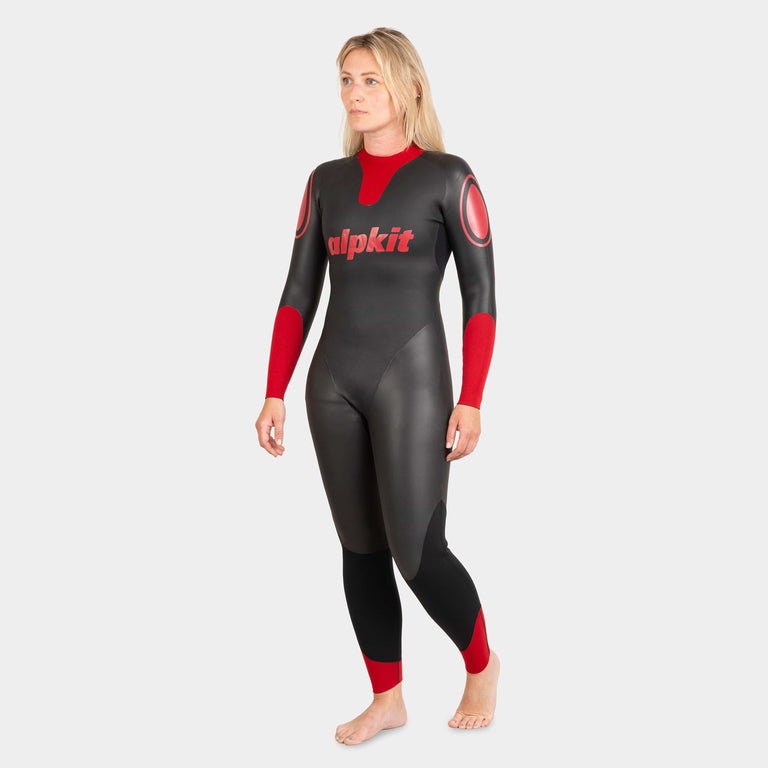
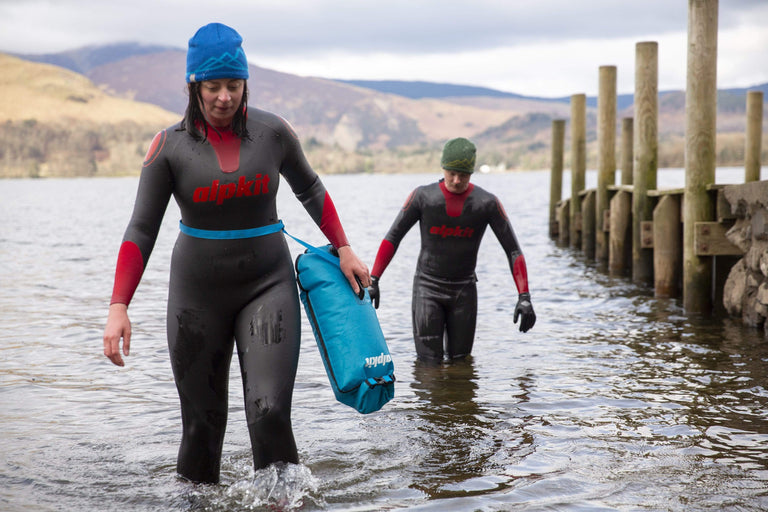
![Silvertip Cold Water Wetsuit [Womens]](http://alpkit.com/cdn/shop/files/silvertip-womens.jpg?v=1706614008&width=768)
![Silvertip Cold Water Wetsuit [Womens]](http://alpkit.com/cdn/shop/files/SWAKSILTSC-neoprene-outdoor-swimming-cap-in-water_758f3933-2d1a-471a-a965-24105416e9b2.jpg?v=1706614013&width=768)
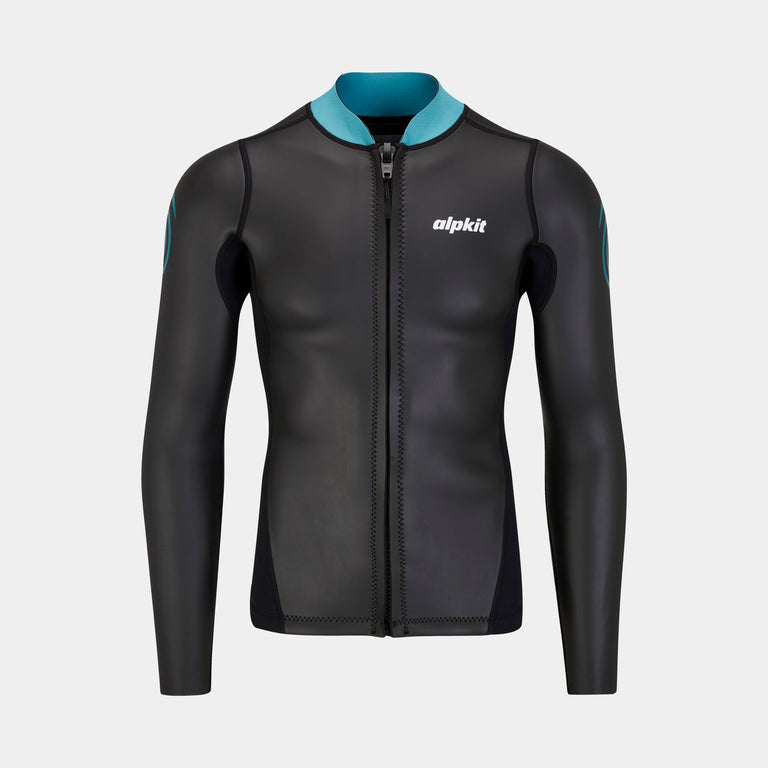
![Element Wetsuit Jacket [Mens]](http://alpkit.com/cdn/shop/products/element-mens-jacket-pants-ecom-2.jpg?v=1695902047&width=768)
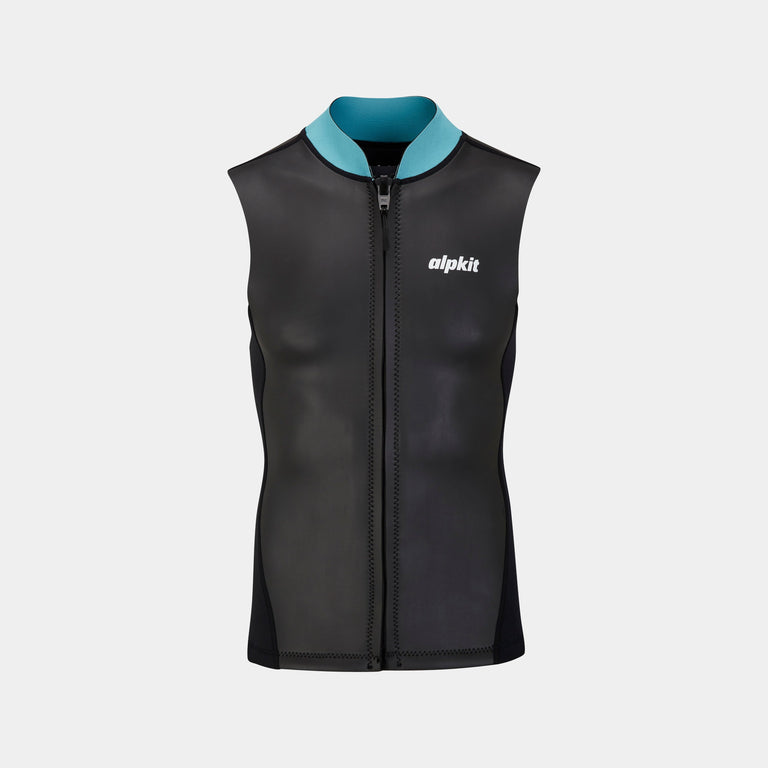
![Element Wetsuit Vest [Mens]](http://alpkit.com/cdn/shop/products/element-mens-vest-shorts-ecom-2_bed513c4-b564-4446-856d-d889f90f885e.jpg?v=1695902060&width=768)
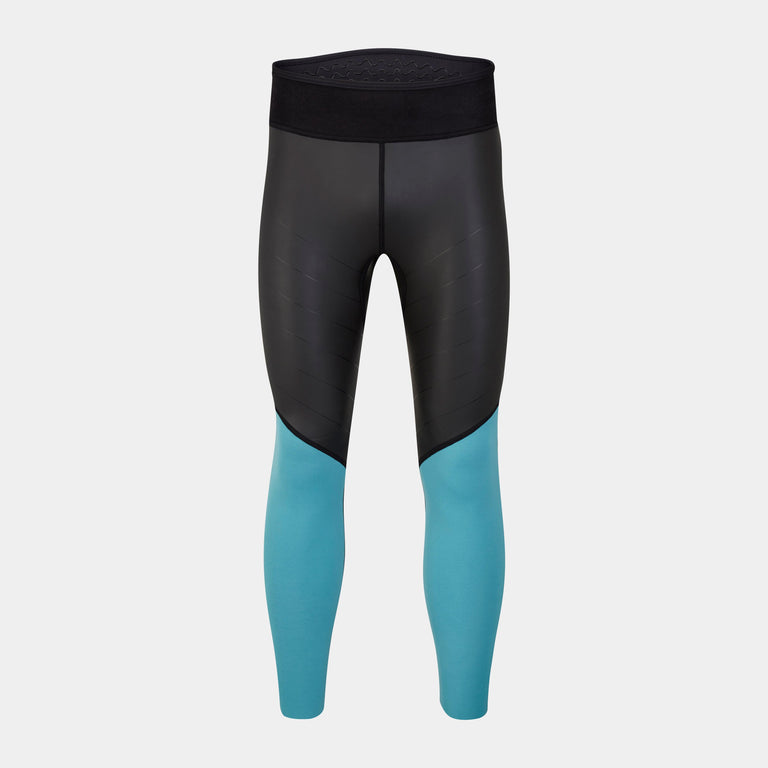
![Element Wetsuit Pants [Mens]](http://alpkit.com/cdn/shop/products/element-mens-jacket-pants-ecom-2_38dbf092-f607-4bbd-bd7a-0477da29bcef.jpg?v=1695902051&width=768)
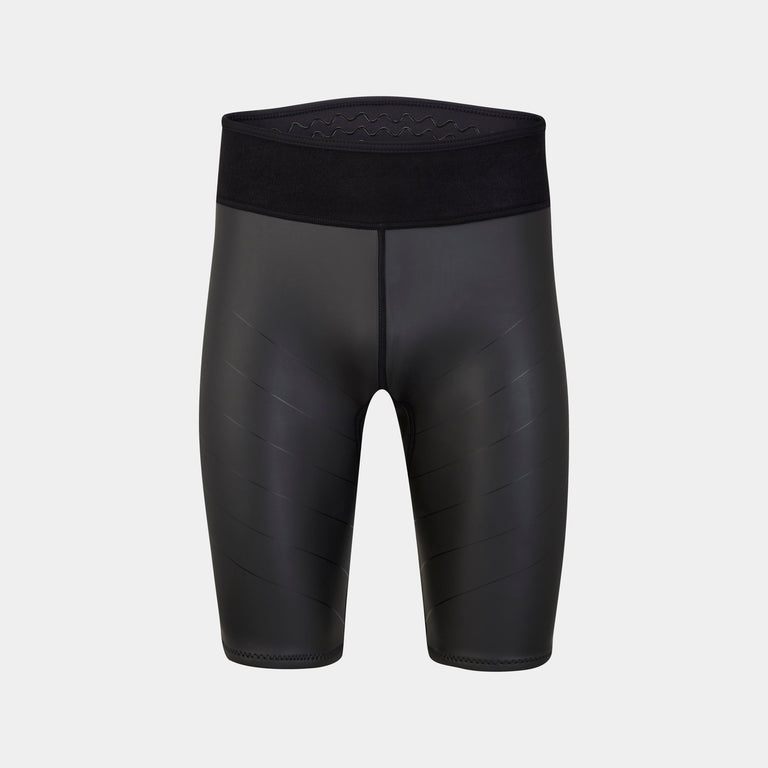
![Element Wetsuit Shorts [Mens]](http://alpkit.com/cdn/shop/products/element-mens-vest-shorts-ecom-2.jpg?v=1695902057&width=768)
![Element Wetsuit Shorts [Womens]](http://alpkit.com/cdn/shop/files/womens-element-shorts.jpg?v=1702653059&width=768)
![Element Wetsuit Shorts [Womens]](http://alpkit.com/cdn/shop/products/element-womens-vest-shorts-ecom-1.jpg?v=1702653054&width=768)
